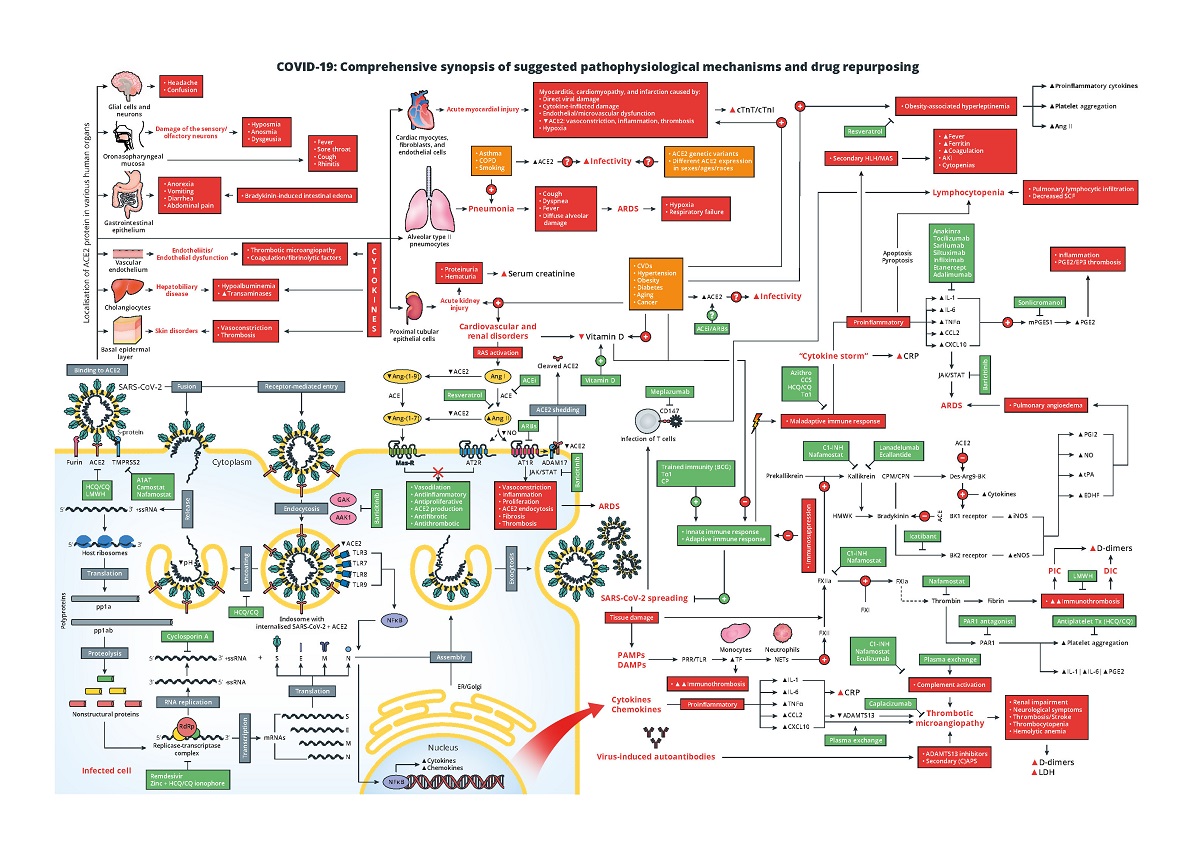During the current COVID-19 pandemic caused by SARS-CoV-2, clinicians and scientists are working assiduously to unravel its pathophysiology and find effective treatments. An impressive number of papers has been published on SARS-CoV-2, exposing the complexity of the disease, the tendency of scientists to form hypotheses within their area of expertise, and the lack of orchestration of research. Hypotheses and research findings mainly complement each other, though sometimes controversies can be discerned among various theories and study results. Our overview aims to portray the ‘big picture’ of COVID-19, visualising the interwovenness of different pathophysiological pathways, with a focus on cytokine-induced pathology, the sequelae of ACE2 downregulation, and thrombosis associated with microvascular injury. It aids in overseeing the effects of repurposed drugs on intended targets, but also alerts to the (adverse) effects on interacting pathways. The overview shows how comorbidities probably increase susceptibility to (severe) COVID-19 and provides the possible pathophysiological origin of signs, symptoms, and biochemical abnormalities.

